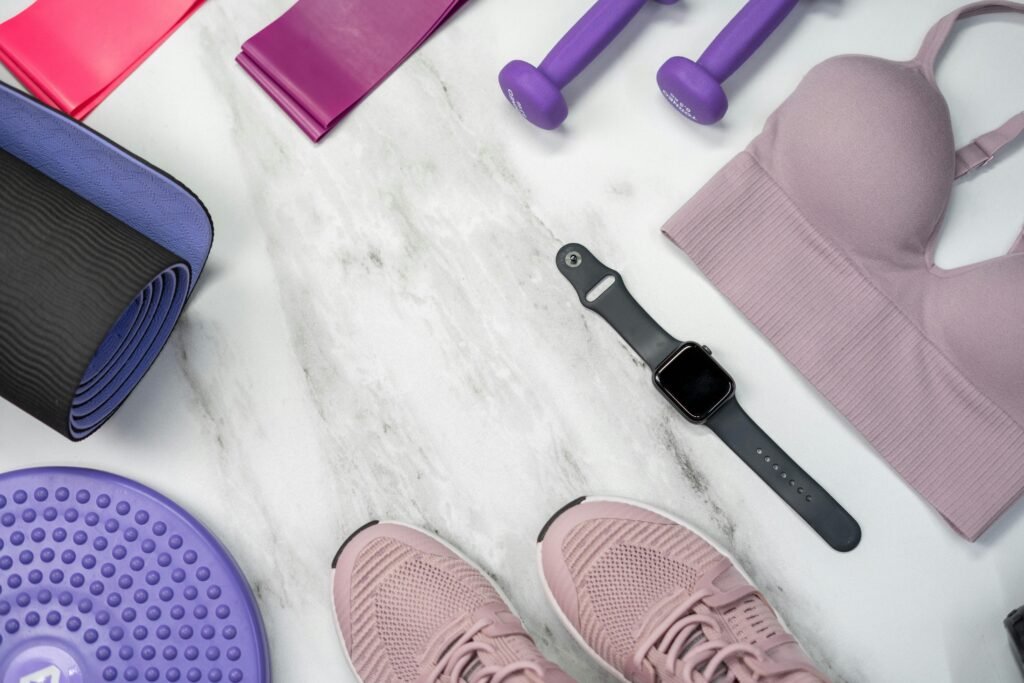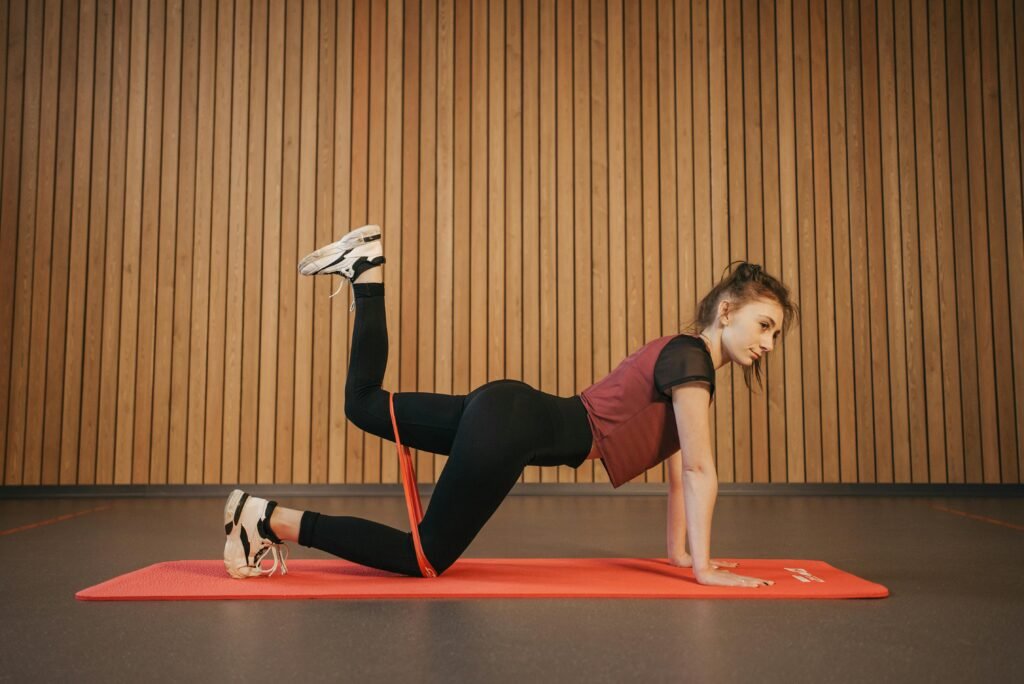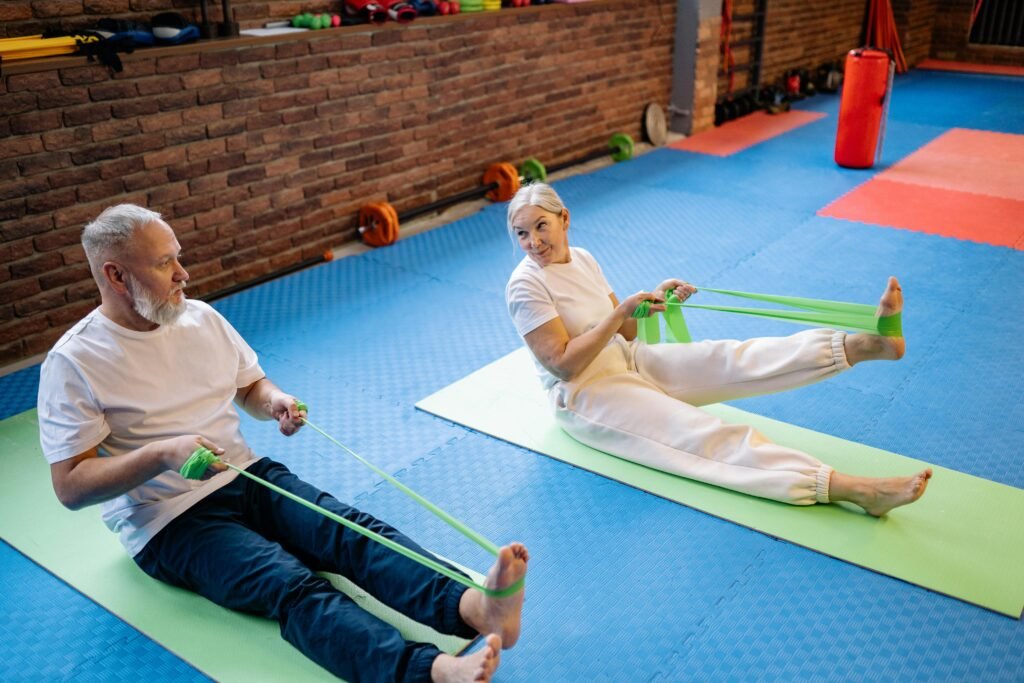When it comes to fitness equipment, nothing is as classic and powerful as dumbbells. These versatile tools can be used by exercisers of all ages and skill levels for countless exercises. They are compact, easy to store, and simple to use. For beginners, starting with dumbbell exercises before moving on to more advanced equipment like kettlebells or barbells is the best approach.
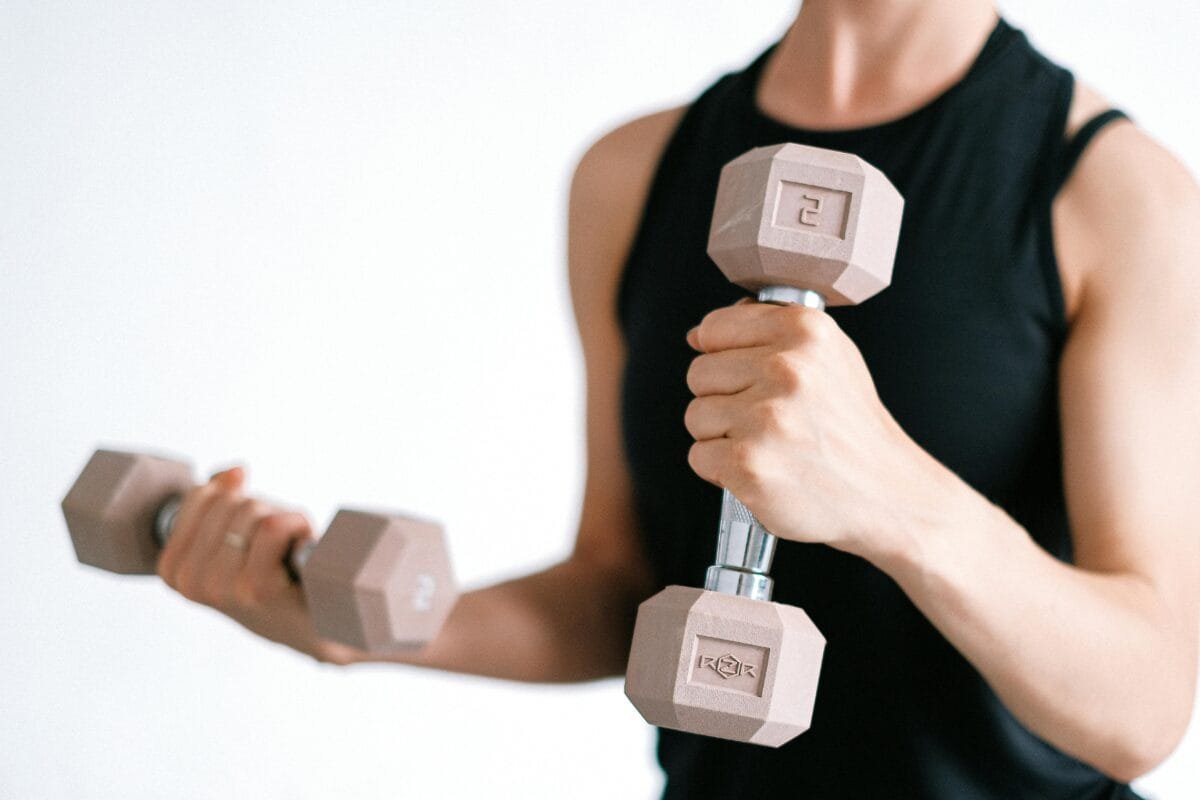
Dumbbells require you to engage your muscles fully to maintain proper form, which over time enhances your balance and stability. When using dumbbells, not only do you work the primary muscles involved in the movement, but you also activate smaller stabilizing muscles, increasing the efficiency of your workout.
The variety of movements possible with dumbbells means you can continuously challenge your muscles and mind in new ways, avoiding monotony and ensuring continuous progress.
PART 01: What Weight Should Beginners Use?
Choosing the right weight for your dumbbell exercises can be confusing for beginners. Generally, light weights range from 3-5 pounds, medium weights from 5-15 pounds, and heavy weights are 15+ pounds. However, what feels “light,” “medium,” or “heavy” will vary from person to person. Additionally, the weight you use for a bicep curl might differ from that used for a shoulder press due to variations in muscle endurance and exercise load.
Safety First: Start with lighter weights to ensure safety, especially since smaller muscles fatigue more quickly than larger ones. A general rule for beginners is to decrease the weight if you struggle to complete repetitions.
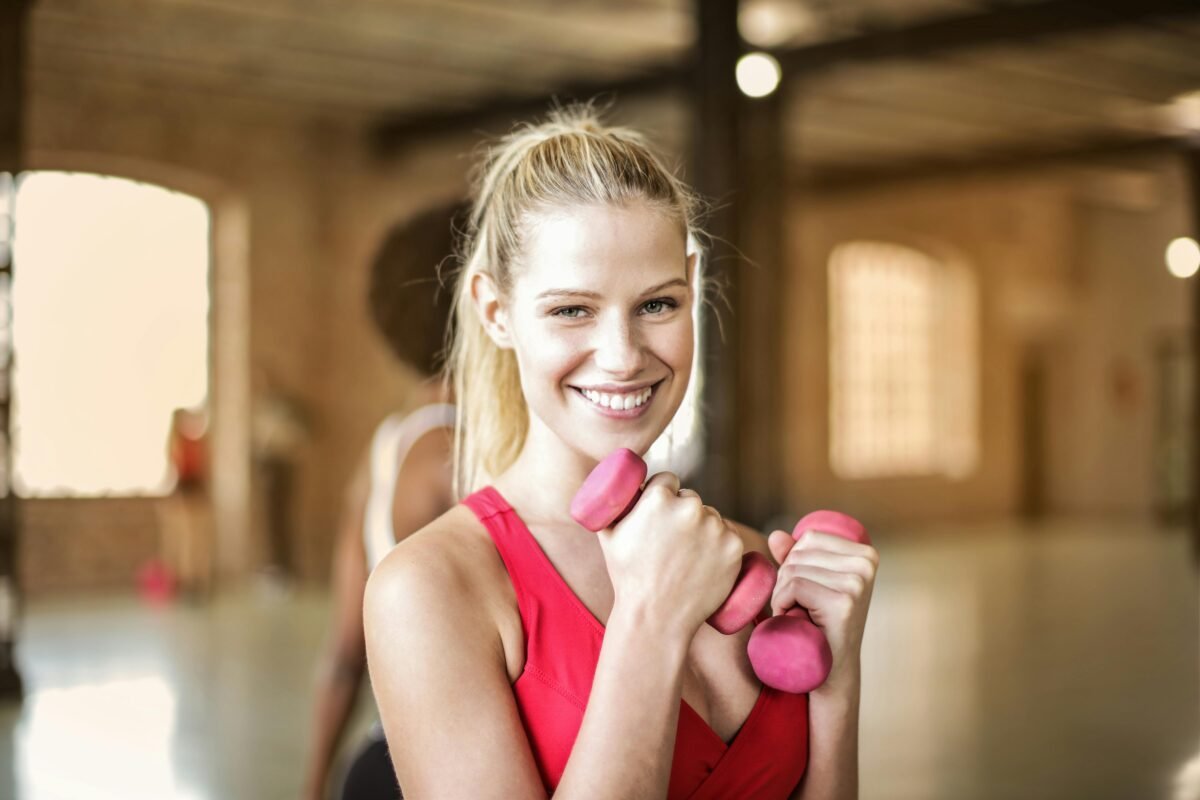
PART 02: How Can Beginners Maximize Benefits from Dumbbell Exercises?
To get the most out of your dumbbell workouts, focus on correct form, gradually increase the weight, and allow adequate recovery time.
- Proper Warm-Up: Engage the muscles you plan to train with bodyweight exercises or light dumbbell movements.
- Maintain Form: Perform each exercise through its full range of motion, control rest periods between sets, and adjust weights as needed.
- Progressive Overload: As you become stronger and adhere to your training plan, periodically increase the weight. The goal is to feel a burning sensation in your muscles during the last few reps while maintaining proper form.
PART 03: Beginner Dumbbell Exercises (Upper Body)
Bicep Curls
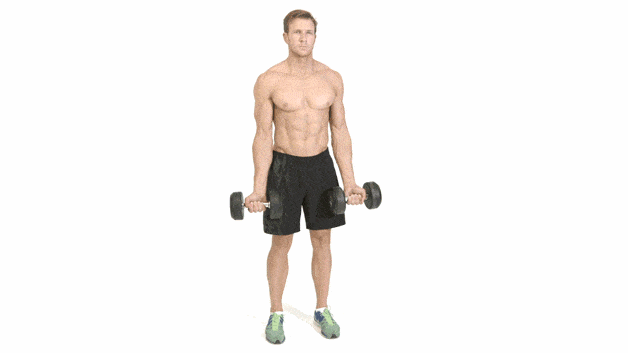
- Stance: Stand with feet hip-width apart, holding a dumbbell in each hand, palms facing forward.
- Movement: Curl the dumbbells toward your chest, keeping elbows close to your sides.
- Pause: Hold for 2 seconds at the top, then lower back to the starting position.
- Muscles Worked: Biceps (some triceps at the bottom of the movement).
Front and Lateral Raises
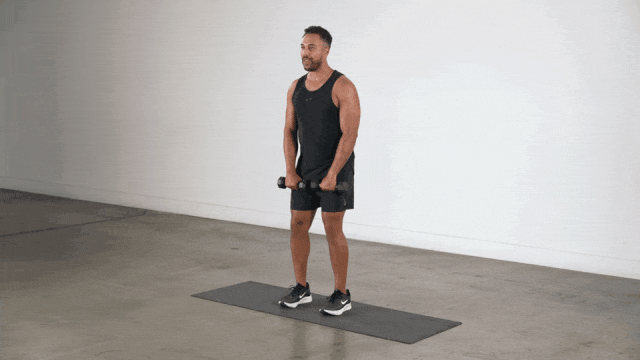
- Front Raise:
- Stance: Feet hip-width apart, hands holding dumbbells, palms facing backward.
- Movement: Exhale, engage your core, and raise both arms straight to shoulder height, then slowly return to the start.
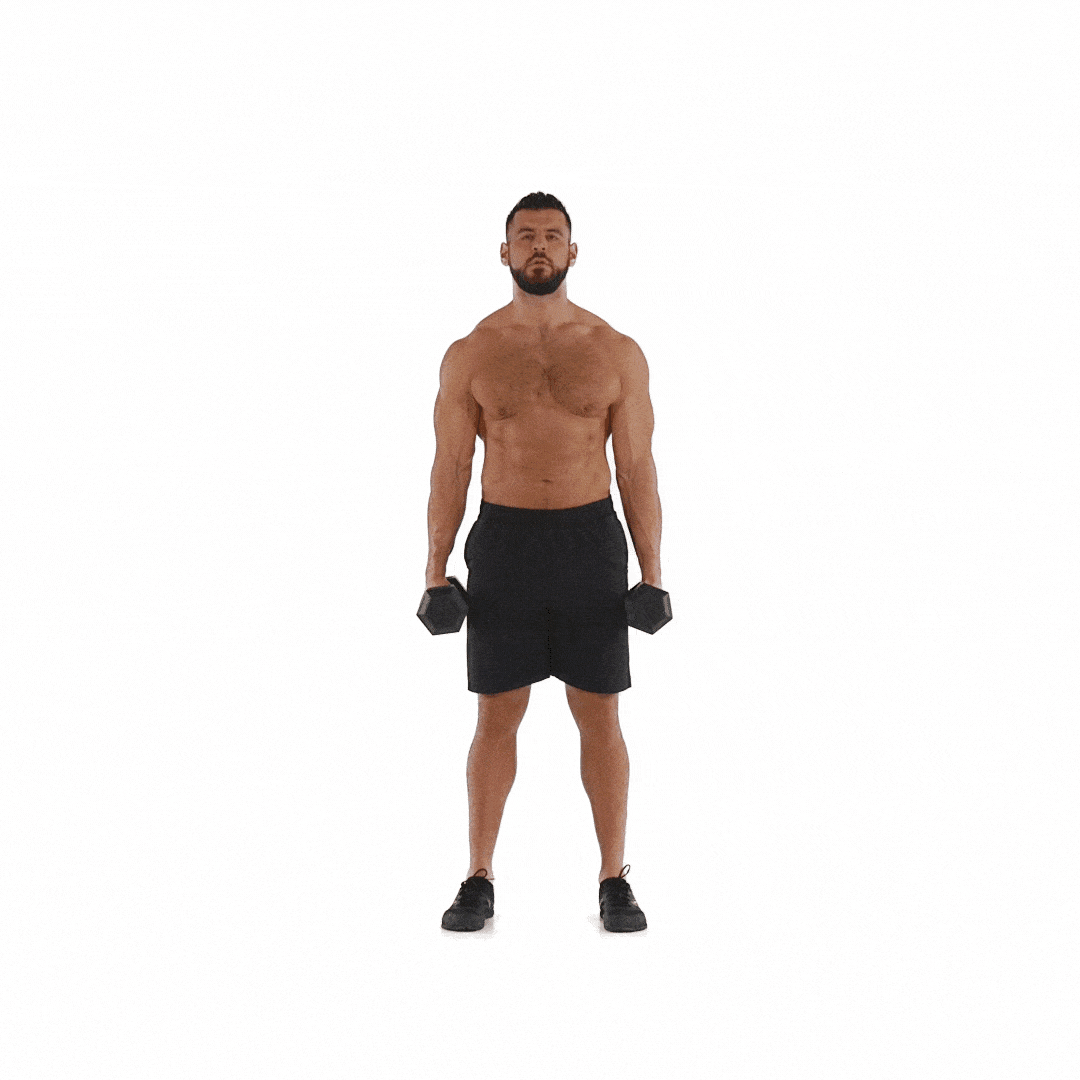
- Lateral Raise:
- Stance: Feet hip-width apart, hands holding dumbbells, palms facing inward.
- Movement: Exhale, engage your core, and raise both arms straight out to the sides until they reach shoulder height, then slowly return to the start.
- Muscles Worked: Anterior and lateral deltoids, core, and some pectoral muscles.
Overhead Press
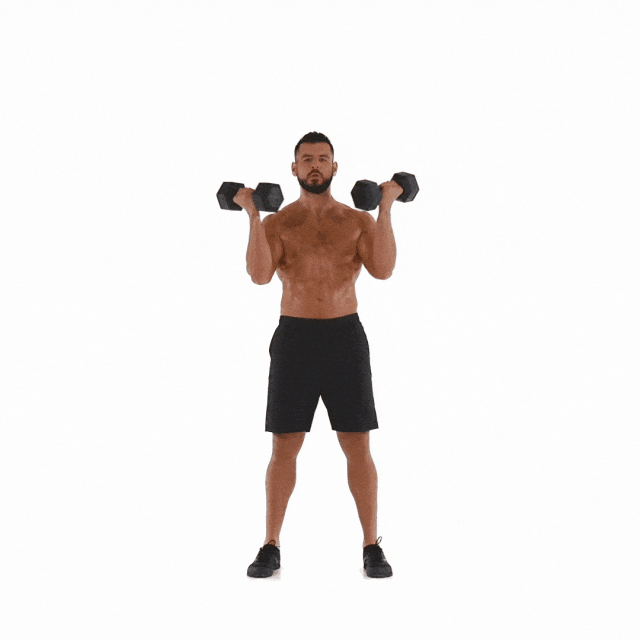
- Stance: Stand with feet hip-width apart, holding dumbbells at shoulder level, palms facing forward.
- Movement: Exhale, extend your arms overhead, keeping your core engaged and avoiding arching your back. Lightly touch the dumbbells together at the top.
- Descent: Rotate your forearms as you lower the dumbbells, turning your palms backward to lightly touch them at chest level.
- Muscles Worked: Pectorals, deltoids, trapezius, and triceps.
Tricep Kickbacks
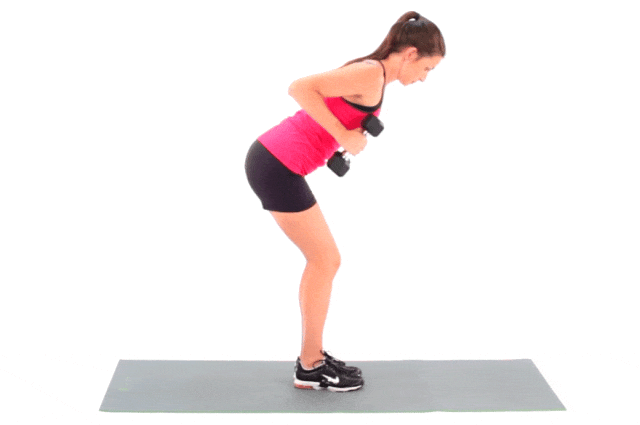
- Stance: Stand with feet hip-width apart, holding a dumbbell in each hand, arms at your sides, palms facing inward.
- Movement: Hinge at the hips, keeping your back flat. Bend your elbows and pull them back. This is the starting position. Extend your arms straight behind you without locking your elbows.
- Return: Slowly return to the starting position.
- Muscles Worked: Triceps.
Reverse Flyes
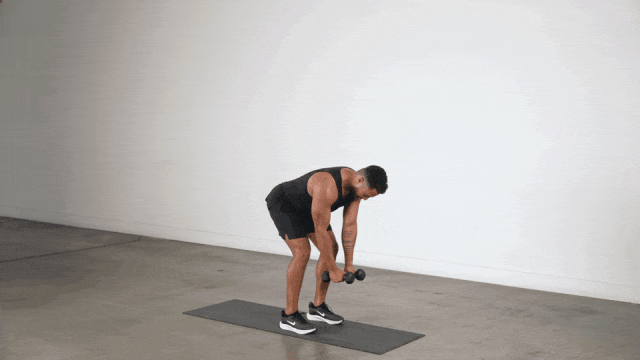
- Stance: Stand with feet hip-width apart, holding dumbbells, palms facing inward.
- Movement: Hinge at the hips, keeping your back flat, so your torso is at a 45-degree angle to the floor. Bring your arms together in front of you, this is the starting position. Pull your shoulder blades down and back, opening your arms into a T-shape (elbows slightly bent).
- Return: Slowly bring your arms back to the starting position.
- Muscles Worked: Rear deltoids, rhomboids, latissimus dorsi, and trapezius.
PART 04: Beginner Dumbbell Exercises (Lower Body)
Lunges
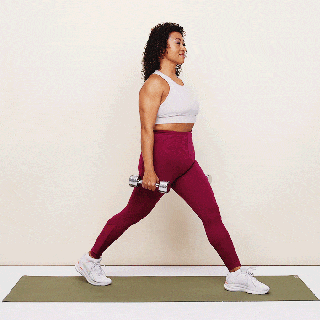
- Stance: Stand with feet hip-width apart, holding a dumbbell in each hand at your sides.
- Movement: Step back with your right foot, ensuring your feet remain hip-width apart. Bend both knees to 90 degrees, with your right knee almost touching the ground.
- Stand Up: Push through your glutes to return to the starting position.
- Muscles Worked: Quadriceps, hamstrings, calves, and glutes.
Romanian Deadlifts
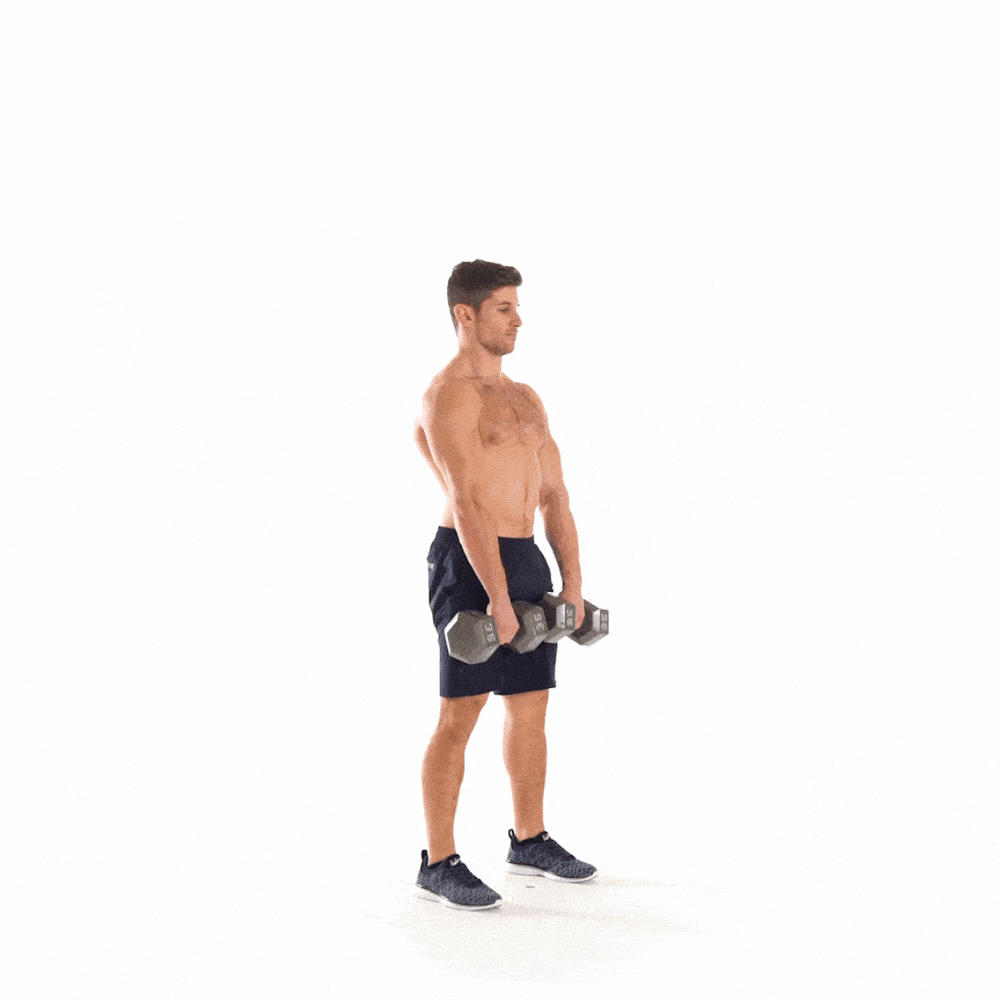
- Stance: Stand with feet hip-width apart, holding dumbbells in front of your thighs.
- Movement: Hinge at the hips, keeping your chest up. Knees will be slightly bent, back straight. Lower the weights toward your shins.
- Return: Push through your heels to stand up, squeezing your glutes at the top.
- Muscles Worked: Glutes, hamstrings, calves, and back.
Hip Thrusts
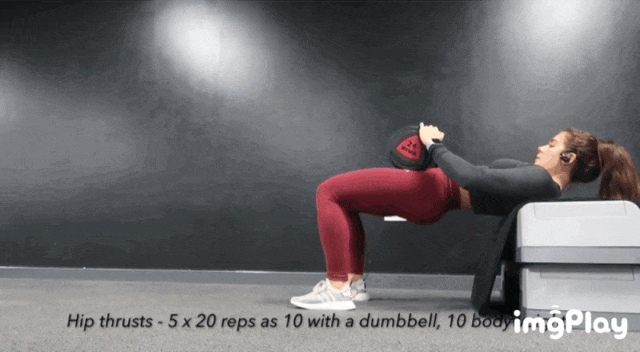
- Stance: Lie on your back with knees bent, feet flat on the floor. Hold a dumbbell in each hand, placed near the top of your thighs, not directly on your hip bones.
- Movement: Squeeze your glutes and push through your heels to lift your hips, forming a straight line from shoulders to knees.
- Pause: Hold at the top, then lower back to the starting position.
- Muscles Worked: Glutes, hamstrings, and back.
Goblet Squats
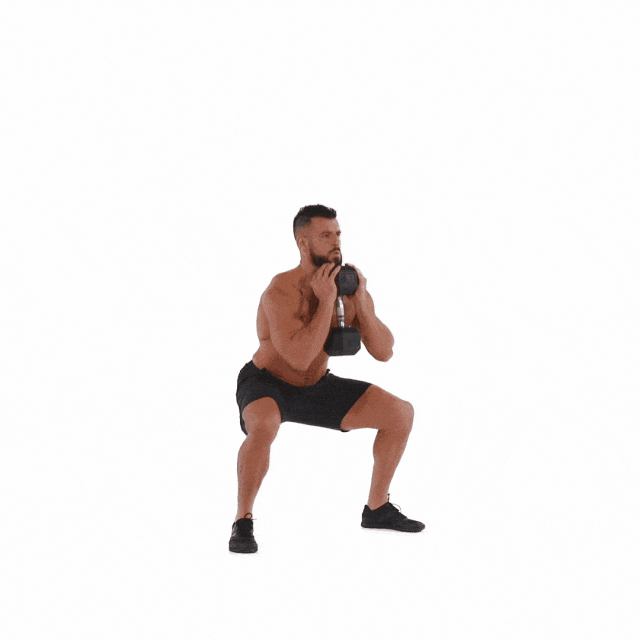
- Stance: Stand with feet hip-width apart or slightly wider, toes slightly turned out. Hold a single dumbbell with both hands at chest level.
- Movement: Engage your core, keep your chest up, and bend your knees into a squat until your thighs are parallel to the ground.
- Stand Up: Push through your heels to return to the starting position.
- Muscles Worked: Quadriceps, hamstrings, glutes, calves, and core.
PART 05: How Long Should a Dumbbell Workout Last?
For beginners, a dumbbell workout can range from 10 to 30 minutes. Initially, a 10-minute session focusing on either upper body, lower body, or a full-body workout can be sufficient. You can combine multiple 10-minute sessions to create a comprehensive 30-minute workout or add an extra 10-minute session after another workout. Remember, longer workouts require more recovery time.

